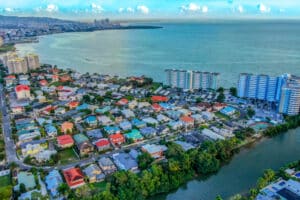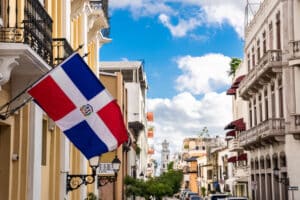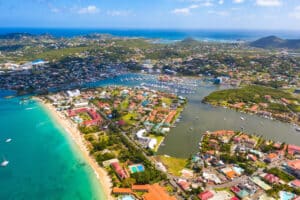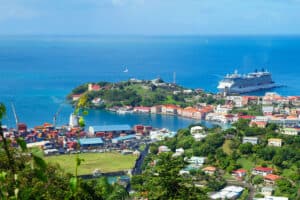Meta description: Welcome to the 2024 safety guide on the Cayman Islands—a Caribbean haven with low crime rates, minimal travel warnings, and a friendly community.
The Cayman Islands are a popular stop on Caribbean cruises, and George Town, the capital, is often the first sight passengers see.
Whether you’re planning a quick port visit or an epic vacation here, one thing’s for sure—you need to feel safe while doing so.
Good news! The picturesque Cayman Islands are safe.
In fact, the archipelago is one of the safest destinations in the Caribbean. The islands’ wealth, economic stability, political security, and friendly community all attest to that.
Let us delve into the details.
Are you planning a last minute trip to Cayman Islands? We’ve put together all the resources you’ll need for a fun & safe travel:
🛌 Best & Safest Places to Stay in Cayman Islands:
👉 The Ritz-Carlton, Grand Cayman – Sea view, Garden, Private bathroom
👉 Palm Heights – Private beach area, Family rooms, Fitness centre
👉 Black Urchin Boutique Resort – (My recommendation for apartment)
👉 Kimpton Seafire Resort – Pets allowed, Free WiFi, Outdoor swimming pool
⛱️ Fun Activities & Tours in Cayman Islands:
👉 Cayman’s Classic Food Tasting & Cultural Experience
👉 Small Group E-Bike Grand Cayman Ecological Half-Day Tour
👉 Private, luxury, custom charters to Stingray City, Snorkeling & More
🚗 Best & Safest Cayman Islands Transportation Services:
👉 Airport Pickup Service – Welcome Pickups
👉 Rent a Car – DiscoverCars
🙏 Stay Safe While Travelling:
👉 Safetywing (for medical insurance)
👉 VisitorsCoverage (for trip insurance)
Are the Cayman Islands Safe?
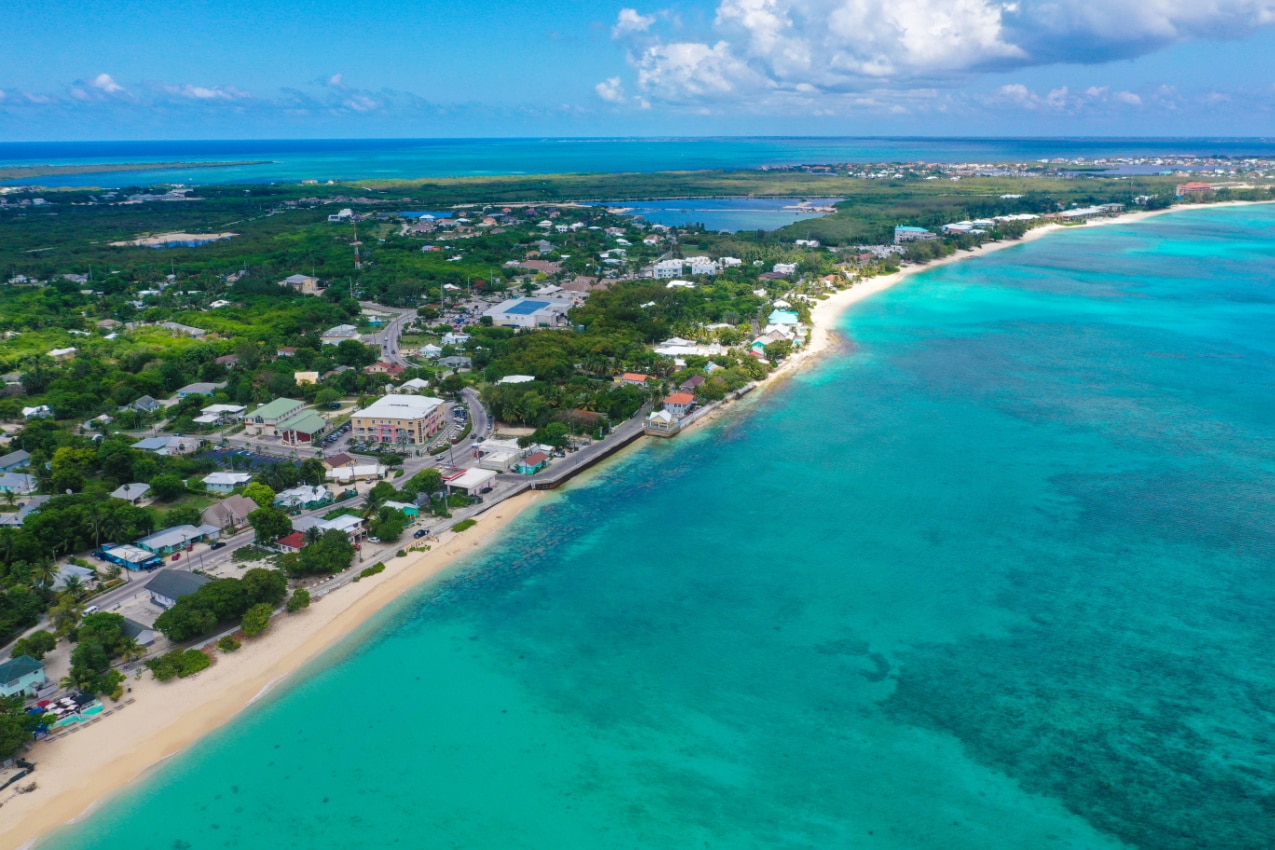
The Cayman Islands are about as safe as they come.
You have three safe islands to explore—Grand Cayman, Cayman Brac, and Little Cayman. The largest, Grand Cayman, is home to the vibrant capital, George Town, nestled on its western shore.
As a British Overseas Territory, the Cayman Islands maintain high standards in regulations and laws. The archipelago is also a world-class international financial center with excellent education and top-notch healthcare.
The ‘CaymanKind’ hospitality from the locals hits you right from the get-go. Their friendly, easy-going nature is what keeps visitors coming back, proving it’s not just about the natural beauty – it’s the people, as well.
While there may be occasional reports of petty theft, ample police protection for travelers makes the islands a safe haven. Just follow the usual travel routine—keep an eye on your belongings and avoid solo walks in poorly lit, backstreet areas.
- International travel advisories: Level 1, take normal safety precautions
- Crime rating: 31.65, very low
- Most committed crimes that affect tourists: Petty thefts like pickpocketing and purse snatching
- Public transportation safety: Buses are safe, reliable, and run late at night; taxis are regulated, and many
- Safety walking alone during the day: Very safe
- Safety walking alone during the night: Safe
- Road safety: Driving is generally safe here; roads are well-maintained, well-lit, and with beautiful views
- Beach safety: The beaches are safe with plenty of lifeguards on duty
- Shark attacks: None
- Common natural disasters: Hurricanes, earthquakes, and tsunamis
- Carbon monoxide poisoning: No reported deaths
- Police presence: Police officers are prominent throughout the islands, especially during major events and holidays
- Medical care quality: Hospitals and medical laboratories are modern and widely accessible; pharmacies are plentiful and even provide delivery services
- Best time to visit: May or November
Travel Advisory for the Cayman Islands
The United States, United Kingdom, Canada, and New Zealand travel advisories all place the Cayman Islands under the Level-1 safety category.
This means that international travel advisories unanimously give the thumbs up to visit the Cayman Islands, suggesting that visitors only need to take normal safety precautions.
The most important precaution is keeping an eye on personal belongings, as crimes like pickpocketing and purse snatching may occur. But hey, this is something to be mindful of everywhere, even during a quick trip to the grocery store in your hometown.
Beach time also calls for some small precautions, as per the advisories. Avoid bringing valuables to the beach and don’t walk alone at deserted beaches after dark, especially if you are a solo female traveler.
While there’s no need to skip the bustling nightlife of the Cayman Islands, advisories want you to be aware of the potential threat of drink spiking—so be cautious about accepting beverages from strangers, as they may contain drugs that could put you at risk.
Authorities also stress the importance of choosing reputable tour operators. Also, don’t forget to get travel insurance before your trip. While you can expect excellent quality medical care here, if you get hurt on your adventures, it may come with a hefty bill.
If you catch wind of a demonstration through local news reports, advisories warn tourists to stay away. Even peaceful demonstrations can turn violent. Since you’re on vacation, it’s best to lay low and avoid participating in political protests.
When compared to other travel advisories in the Caribbean, the difference in safety is striking. Take the Bahamas for instance. The increase in gang activity has put the destination in a Level 2 – ‘Reconsider Travel’ warning category. Haiti is even worse—it’s the site of homicides, kidnappings, and very limited medical facilities, resulting in a Level 4 – ‘Do not travel’ warning.
A Comprehensive Look at the Cayman Islands’ Crime Rates
The crime rating of the Cayman Islands is 31.65, which is low.
In 2022, the archipelago counted a total of 760 violent crimes, showing a decrease of 49 or -6% compared to 2021. Among the reported violent crimes, only 4 were murders, and 6 were attempted murders.
The annual statistics for 2022 also reveal a total of 37 firearms crimes, 154 drug crimes, and 1,227 acquisitive crimes, including 172 burglaries and 50 robberies.
Fortunately, none of these cases reported tourists as victims of crime.
| Safety Concerns | Crime Rate | Status |
| Overall Crime Level | 30.30 | Low |
| Increase in Crime (Past 3 Years) | 62.15 | High |
| Home Break-Ins and Thefts | 41.22 | Moderate |
| Mugging and Robbery | 30.76 | Low |
| Car Theft | 20.87 | Low |
| Theft from Vehicles | 39.82 | Low |
| Personal Attacks | 24.94 | Low |
| Verbal Insults | 23.12 | Low |
| Racial, Ethnic, Gender, or Religious-Based Attacks | 15.24 | Very Low |
| Drug Use and Dealing | 34.76 | Low |
| Property Crimes (Vandalism and Theft) | 38.63 | Low |
| Violent Crimes (Assault and Armed Robbery) | 32.50 | Low |
| Corruption and Bribery | 36.50 | Low |
| Safety Walking Alone in Daylight | 88.04 | Very High |
| Safety Walking Alone at Nighttime | 65.06 | High |
Police Presence in the Cayman Islands
The watchful presence of the Royal Cayman Islands Police Service (RCIPS) is always there to protect both its travelers and locals, even though the Caymans are not completely crime-free.
On regular days, you’ll likely see police officers patrolling around government buildings, tourist hotspots, malls, roads, and public beaches.
However, their presence is particularly noticeable during significant holidays. For example, during Christmas, the Royal Cayman Islands Police Service ran Operation Winter Guardian, a campaign focusing on crime and road safety. The operation included heightened police visibility through mobile and foot patrols, traffic enforcement checkpoints, and an increased presence of officers including recruits, community officers, and detectives in uniform.
Ensuring the safety of tourists is a priority for the Cayman Islands. However, it’s equally crucial for visitors to follow the rules. Avoid illegal activities like buying or using drugs, refrain from disorderly behavior under the influence of alcohol, and keep your documents handy in case the police request them. The police are there to assist you, even if it’s just asking for directions around the island.
Public Transportation Safety in the Cayman Islands
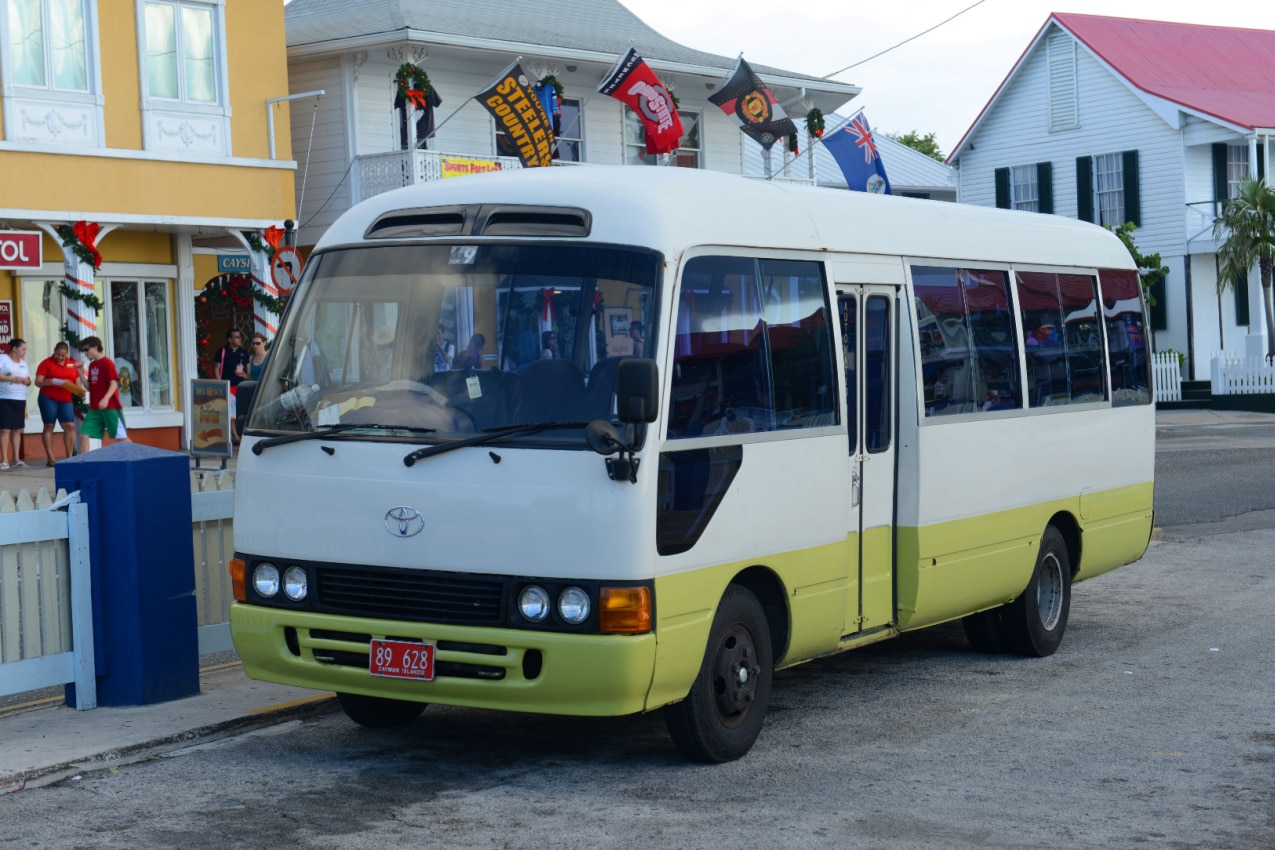
Getting around the Cayman Islands is both safe and reliable.
Buses are the main mode of transport. The central bus terminal sits beside the George Town Public Library on Edward Street, but you can flag down buses along their route or wait at designated stops. Just let the driver know when you want to hop off. Services kick off at 6 AM, and fares vary from $2 to $5, depending on how far you’re going. They accept both KYD (the local currency) and USD.
Taxis are safe, regulated, and readily available. If you need a taxi, consider reaching out to:
- Charlie’s Super Cab & Tours: 888-8888
- A.A. Transportation Service: 926-8294
- Ace: 777-7777
- McCurley’s (North Side): 947-9626
- Mossy Tours & Taxi Service (Cayman Brac): 939-9517
A new addition to the Cayman travel scene is Flex, an app similar to Uber. It lets you share rides and track your journey via GPS to ensure the most efficient routes.
As always, stay alert and be mindful of your surroundings. Rare instances of minor crimes may happen anywhere, so for your safety, opt for a taxi at night. Feel free to use public transport during the day.
Road Safety in the Cayman Islands
The main roads and highways in the Cayman Islands are generally safe for driving as they’re well-maintained, easy to drive on, well-lit, and with awesome views.
Before you hit the road, learn the island’s driving rules. Vehicles in the Cayman Islands drive on the left side of the road. If that’s new to you, maybe consider other ways to get around to avoid accidents.
For those experiences with left-side driving, always remember that pedestrians have the right of way at crossings. Everyone in the car, even in the back, needs a seatbelt. No fog lights in Grand Cayman, and don’t overtake if there’s a solid line in the middle. Using your phone while driving is a no-no unless it’s hands-free.
Even though the Cayman Islands are relatively small, traffic can be a thing during rush hours from 7:30 to 9:30 AM and 4:00 to 6:00 PM. Stick to main roads at these time intervals, as side streets may get busy.
We’ve got some recommendations for the safest and most beautiful roads in the Cayman Islands:
- The North Coast Road has a breathtaking view of the sea and cliffs.
- The Rum Point, Grand Cayman’s tourist hotspot, has roads surrounded by lush tropical scenery.
- The East End Road sits next to the most stunning beaches on Grand Cayman.
- The roads of the heart of Grand Cayman’s former capital, Bodden Town, pass by historic buildings and landmarks, where you can soak in some of the town’s charm.
Medical Care Quality in the Cayman Islands
Healthcare in the Cayman Islands is great, modern, and widely accessible.
There are four fully-equipped hospitals across the islands:
- George Town Hospital, Grand Cayman Island – (1 (345) 949 8600)
- Doctors Hospital, Grand Cayman Island – (1 (345) 949 6066)
- Health City Cayman Islands, Grand Cayman Island – (1 (345) 640 4040)
- Faith Hospital, Cayman Brac Island – (1 (345) 948 2243)
Additionally, there are private medical laboratories in Grand Cayman:
- Phoenix Health Services Ltd, George Town – (1 (345) 943 815)
- Cayman Islands Forensic Science & Pathology Laboratories, George Town – (1 (345) 949 8600)
- Doctors Express Medical Center, George Town – (1 (345) 745 6000)
- Total Health, 802 West Bay Road – (1 (345) 333 2222)
- Grand Harbour Medical, Red Bay – (1 (345) 949 4309)
Pharmacies are well-stocked and work during convenient hours. The pharmacists are helpful and the pharmacies are easily accessible. However, if you’re on Cayman Brac, remember to bring medications along as there’s no pharmacy on the island.
Feel free to get in touch with the following pharmacies, some of which offer delivery services for your medications:
- Health Services Authority Pharmacies, George Town – 1 (345) 949 8600
- Health Care Pharmacy (Grand Harbour), George Town – 1 (345) 947 8900
- Doctors Hospital, George Town – 1 (345) 949 6066
- Doctors Express Pharmacy, George Town – 1 (345) 745 6000
- Total Health Pharmacy, West Bay Road – 1 (345) 333 4444
- Health Care Pharmacy (Governors Square), Seven Mile Beach – (1 (345) 949 8900)
- Savannah Pharmacy & Gifts, Savannah – 1 (345) 946 3336
- Care Pharmacy, Seven Mile Beach – 1 (345) 943 2273
In case of illness or injury during your trip, travel medical insurance can help you a lot in covering pricey medical expenses. But ensure your chosen hospital is covered by your insurance policy, as not all hospitals are covered. For medications, leave your insurance details with the pharmacist, and if covered, you may only need to pay the copay amount.
If you need travel insurance, consider reputable companies like Insubuy, Square Mouth, Visitors Coverage, Insured Nomads, and Safety Wing.
Is It Safe to Travel Solo in the Cayman Islands?
The Cayman Islands are generally considered safe for solo travelers. The crime rate is low, the locals are friendly, and the police force is effective.
Compared to other Caribbean islands, the Cayman Islands boast a lower crime rate, leading international travel advisories to greenlight visits with just normal precautions.
It’s quite common to walk alone at night, with high safety scores on walking alone during both day and night, as per Numbeo’s stats.
Nonetheless, remember to use your common sense—stick to well-lit, popular areas, avoid deserted streets, and stay in the beautiful resort and tourist zones. Most crimes involve petty theft from tourists leaving items unattended. Violent crime is rare, and street harassment is minimal.
Perils of Nature: The Risk of Natural Disasters in the Cayman Islands
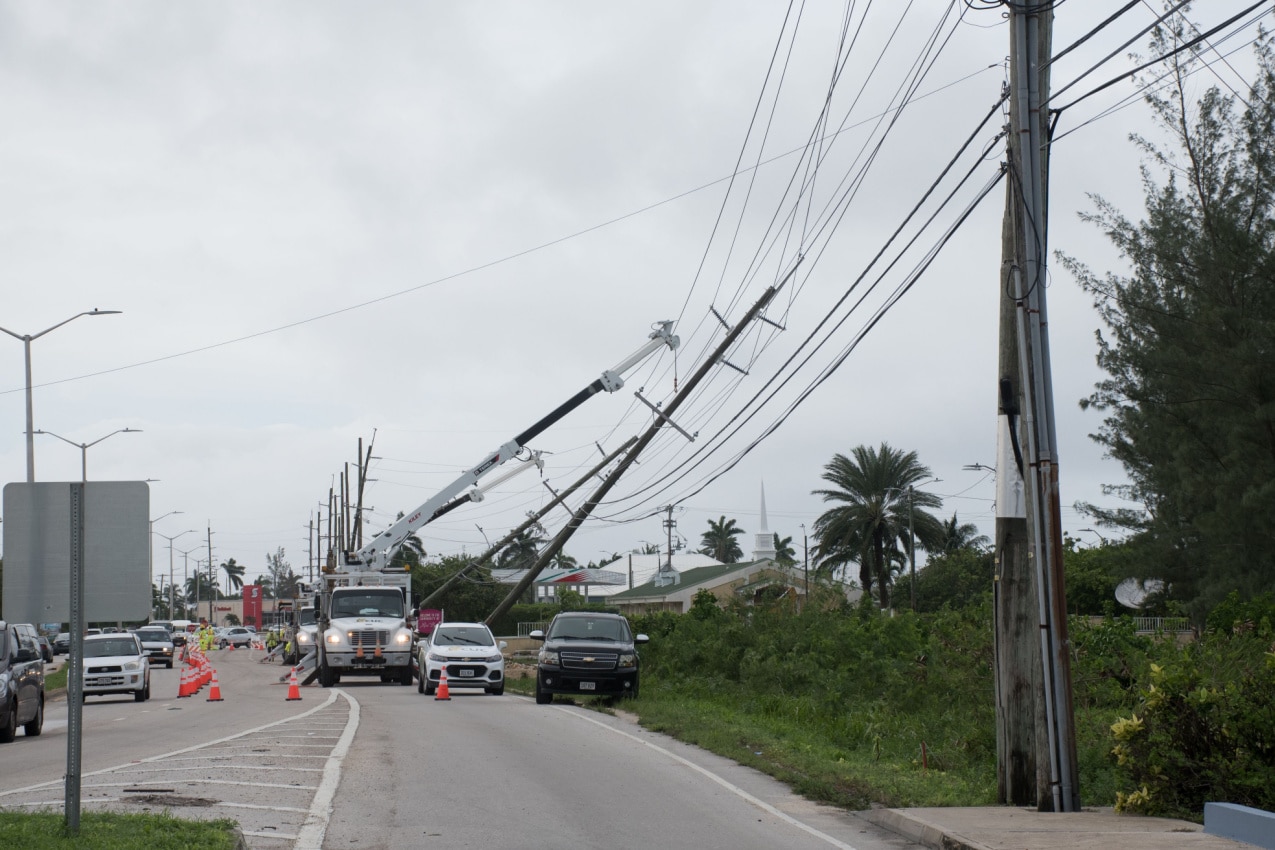
The Cayman Islands are susceptible to three types of natural disasters: hurricanes, earthquakes, and tsunamis.
Hurricanes
The official hurricane season in the Atlantic begins in early June and lasts until late November. In the Cayman Islands, they occur approximately four times a year.
The most recent significant hurricane to hit the Cayman Islands was Idalia. The hurricane made landfall on August 28, 2023, near West Bay, reaching wind speeds of up to 63.4 mph (about 102 km/h). It was classified as a tropical storm hurricane based on the Saffir-Simpson scale.
Hurricane season spans June 1st to November 30th. If you are visiting the Cayman Islands outside of hurricane season, this natural disaster shouldn’t be a concern of yours.
However, if you’ve booked a vacation within the hurricane season, make sure to:
- Download the National Emergency Notification System (NENS) app so you’ll get direct alerts if a hurricane is brewing
- Check weather updates from the Cayman Islands National Weather Service and/or the US National Hurricane Center
- Educate yourself about storm dangers, available shelters, and necessary supplies on the Hazard Management Cayman Islands (HMCI) website
Earthquakes & Tsunamis
The Cayman Islands is located in a seismically active area. This makes it prone to earthquakes and tsunami waves spreading rapidly from the earthquake site.
So far in 2024, the Cayman Islands have encountered no earthquakes. This is below the average of 1.13 earthquakes per year in the country.
The most powerful earthquake in the Cayman Islands happened on January 28, 2020, measuring a magnitude of 7.7. The strongest aftershock measured a 6.1 magnitude with its epicenter 35 miles (around 56 km) east of Grand Cayman. A tsunami threat warning was issued briefly, but an actual tsunami hadn’t formed.
As advised with earthquakes, download the National Emergency Notification System (NENS) app to receive direct alerts in case of earthquakes or tsunamis in the Cayman Islands.
In the rare event of a tremor, remember to:
- Drop to the ground
- Take cover under something sturdy
- Hold on until the shaking stops
If outdoors and feel a tremor:
- Find a clear spot away from buildings and trees
- Follow the drop, cover, and hold-on protocol.
If at the coast and see the water receding:
- Move away immediately and seek higher ground
Beware the Silent Threat: Carbon Monoxide Poisoning in the Cayman Islands
The Cayman Islands has no reported incidents of carbon monoxide poisoning among tourists and residents.
Carbon monoxide (CO) is a silent killer—colorless and odorless, produced when fossil fuels burn incompletely. If a hotel appliance, like a stove or heater, malfunctions, the gas can leak into a room, slowly and silently poisoning those present until it’s too late.
The good news is that CO poisoning is preventable with a simple device—a CO detector. Many accommodations are aware of the risks and equip their rooms with detectors.
However, when you travel, you can’t always rely on the hotel or rental apartment having one. Instances in a Mexico City AirBnB and the Bahamas’ Sandals Resort are examples of the risk you don’t want to take.
For maximum safety, we recommend that you purchase a portable CO detector. This way, you’ll be protected on every vacation, regardless of whether you are in the Cayman Islands, Maldives , or Iceland
If you experience headaches, vomiting, or feel unwell, it could be early signs of CO poisoning. Seek medical care immediately!
Serenity by the Shore: The Safety of Cayman Islands’ Beaches

Cayman’s beaches boast safe and calm waters, and you’ll find plenty of lifeguards on duty.
Seven Mile Beach is the prime beach resort district. It’s one of the most stunning in the Caribbean but also one of the safest. You can stroll along the shore without worrying about anything, really.
Seven Mile Beach isn’t your only option for a beach day. Other secure and enjoyable beach spots include Cayman Kai, Rum Point, Sandy Point, and Owen Island.
Alongside lifeguards, certain beaches use warning flags to communicate swimming conditions:
- Red Flag: Do not swim! High waves and strong currents
- Yellow Flag: Swim carefully! Possible high waves or tricky currents
- Green Flag: Good to go! The water is safe for swimming
- Purple Flag: Watch out! There is potentially harmful marine life around
- Blue Flag: Thumbs up! The beach is known for clean water, environmental care, and safety
If the beach you’ve chosen has no flag or lifeguard, it’s a good idea to talk to the locals. Generally, areas with vibrant beach activity and swimmers are considered the safest. Rest assured, sharks are less common in areas with high human activity. However, there’s no need to worry about shark attacks as the Cayman Islands have never experienced such incidents.
Cayman Islands Weather Patterns: What to Expect
The Cayman Islands have a tropical marine climate with a wet, warm season from mid-May to October, and a dry and relatively balmy season from November to April.
Temperature variations are minimal throughout the year, typically ranging from 74°F to 89°F (about 23.3°C to 31.7°C). Rarely does the temperature fall below 70°F (about 21.1°C) or surpass 91°F (about 32.8°C).
The sunny stretch in the Cayman Islands runs from November to mid-May. February stands out as the clearest month, with a clear sky around 81% of the time.
The dry season aligns with this sunny period, from November to mid-May. April is the driest month, experiencing an average of 1.2 wet days with rainfall totaling 0.2 inches (about 0.5 cm).
A cloudier phase unfolds from mid-May to most of October. June claims the title of the cloudiest month, with an overcast sky about 79% of the time.
The wet season coincides with this cloudier period, beginning mid-May and persisting until late October. In addition to rainfall, this is also hurricane season, with peak activity occurring from August through October.
During the wet season, there’s over 21% chance of a given day being rainy. A typical wet-season day involves waking up to warm, sunny mornings that become hot by the afternoon, often accompanied by a few afternoon thunderstorms and rain showers. October sees the highest number of wet days, averaging 11.2 days with 4.2 inches of rainfall (about 10.7 cm).
The windier period spans from mid-October to March’s end, with average wind speeds surpassing 13.2 mph (about 21.2 km/h). December takes the lead as the windiest month, with an average hourly wind speed of 15.6 mph (about 25.1 km/h). In contrast, September is the calmest month, with an average hourly wind speed of 10.9 mph (about 17.5 km/h).
For beach enthusiasts, the warmest waters in the Cayman Islands occur from July to October, boasting an average temperature exceeding 84°F (about 28.9°C). September offers the warmest water, with an average temperature of 85°F (about 29.4°C), while February has the coolest water, averaging 80°F (about 26.7°C).
Monthly Average Temperatures in the Cayman Islands
| Month | Fahrenheit (°F) | Celsius (°C) |
| January | 78 | 25.5 |
| February | 78 | 25.5 |
| March | 79 | 26.1 |
| April | 81 | 27.2 |
| May | 82 | 27.7 |
| June | 84 | 28.8 |
| July | 85 | 29.4 |
| August | 84 | 28.8 |
| September | 84 | 28.8 |
| October | 83 | 29.4 |
| November | 81 | 27.2 |
| December | 79 | 26.1 |
Source: WeatherSpark, 2024 data
When Is the Best Time to Visit the Cayman Islands?
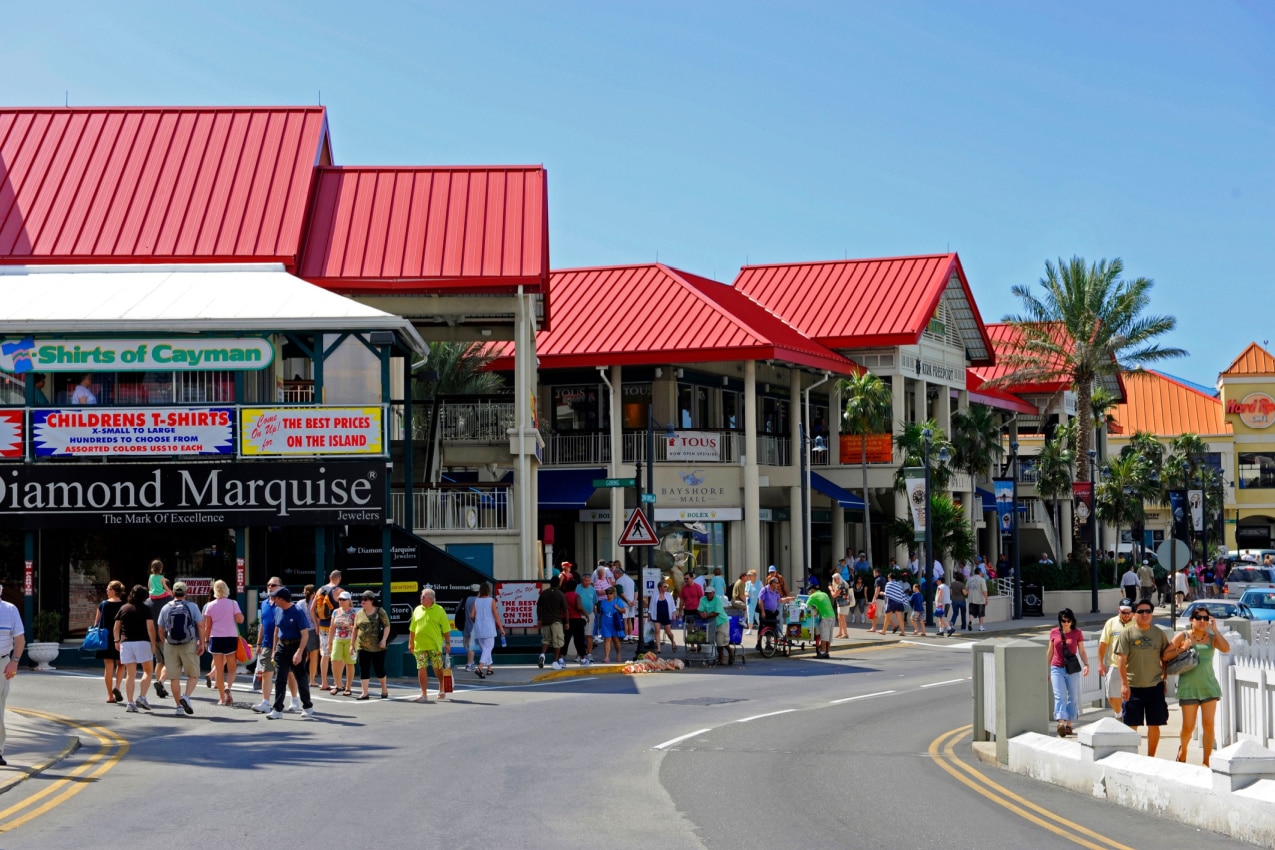
With its year-round sunshine and balmy temperatures, there’s no bad time to visit the Cayman Islands.
For many, the optimal time to explore the Cayman Islands is during the winter months from December to April—known as the dry season. This period is especially favored as it coincides with the northern hemisphere’s winter, attracting tourists seeking warm sun, dry weather, and an escape from the cold. However, one drawback to consider is the increase in prices for hotels, tours, and airfare.
Alternatively, avoid the higher prices and the bustling atmosphere and plan your visit from May to November—during the rainy season. If rain does occur, it’s typically brief and in the afternoon, leaving the rest of the day pleasant and sunny. The rainy season presents fantastic deals on accommodations and attractions. If you prefer a more relaxed and tranquil vacation with fewer crowds, the low season might be an ideal fit for you.
The sweet spot to visit the Cayman Islands, however, is either May or November. These months are the shoulder seasons, offering the best of both worlds. You get that perfect combo of sunshine, very little rain, less tourists hogging the beaches, and prices that won’t break the bank. If you ask us, this would be the ultimate best time to visit the Cayman Islands.
How to Stay Safe in the Caymans
- Don’t get lost. Google Maps will help you with navigation from point A to point B.
- Don’t go out late at night if you’re hungry. LetsEat will deliver you food from the Caymans’ best restaurants.
- Calculate your taxi fare before you book. Download the CI: GO taxi fare app (Google Play/ Apple Store).
- Follow the bus schedule by checking out Caymantransport.ky for routes and times.
- Don’t let your documents get lost or stolen, so make photocopies. If trouble finds you, at least the originals are stashed away safely.
- Beach day essentials: snacks, sunscreen, and water. Leave the valuables in your hotel safe, and leave before the sun sets.
- Avoid hitting the ATM at night.
- The Caymans are safe, but keep your wits about you in certain spots. Downtown George Town gets a bit rowdy at night, and you don’t want to fall victim to petty street crime.
Emergency Numbers
- Police Service: 911
- Fire Department: 911
- Hospital: 911
Start Packing!
International travel advisories give the Cayman Islands the thumbs up, and so do we. Just don’t forget to use common sense as you would anywhere in the world—avoid walking alone at night in dodgy back alleys, don’t flaunt your valuables or leave them unattended, and don’t accept drinks from strangers or leave open containers laying around.
When it comes to when to visit—there’s no bad time to visit the Caymans, though our favorite months are May and November. Finally, don’t forget to pack up the sunscreen. You don’t want to be the reddest thing on the beach with all that Caribbean lobster around!
